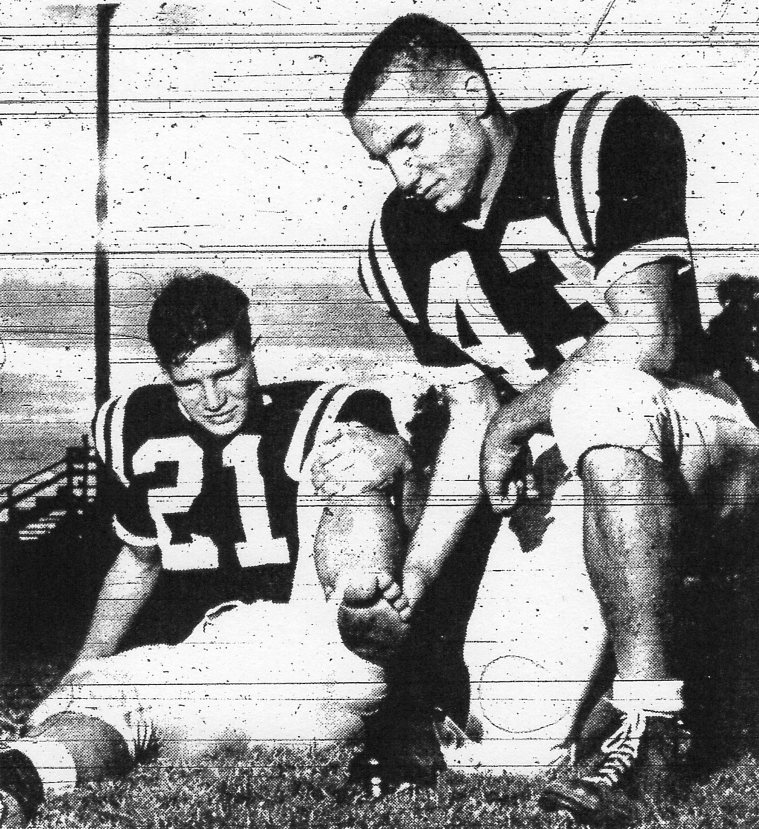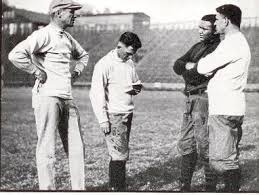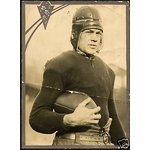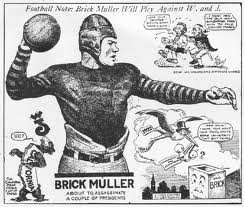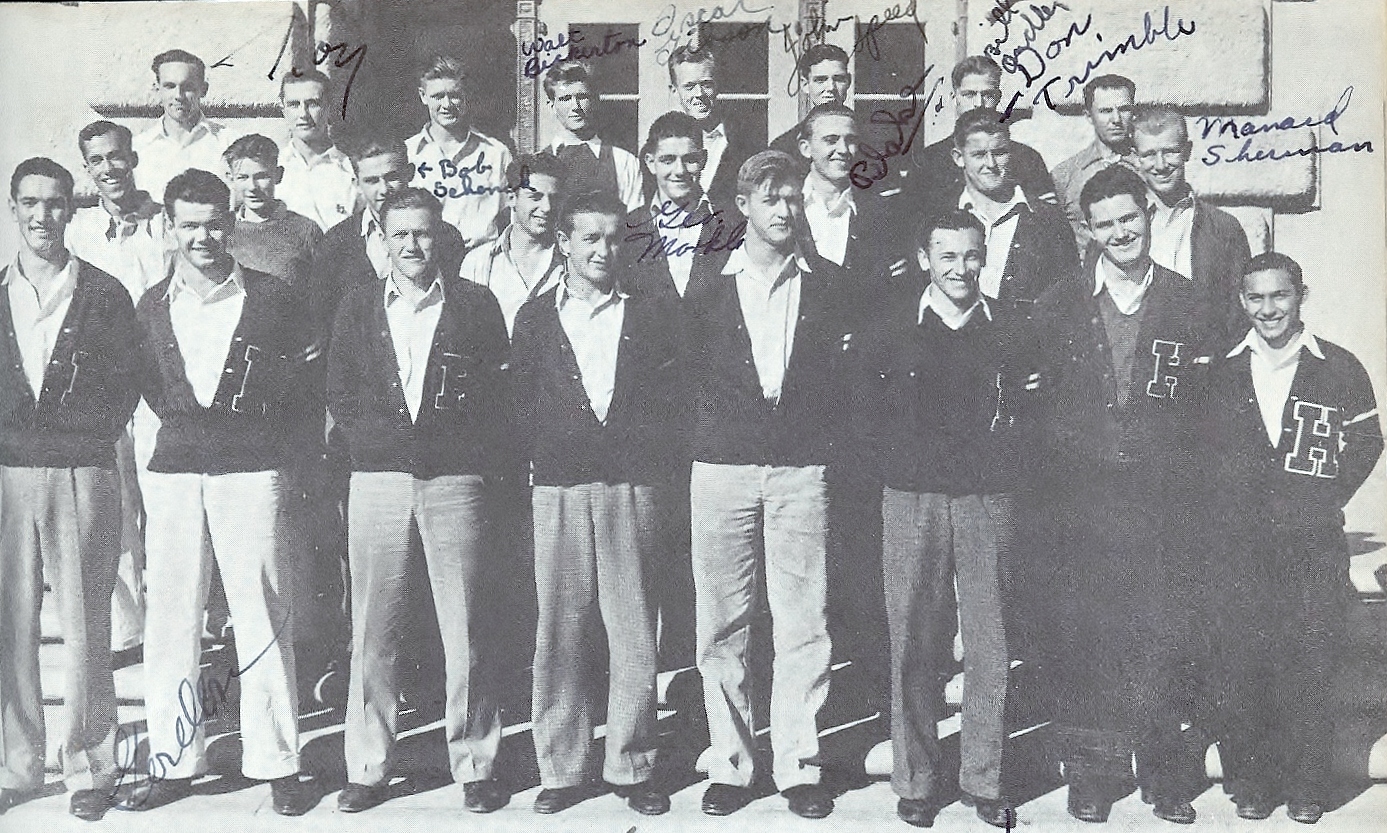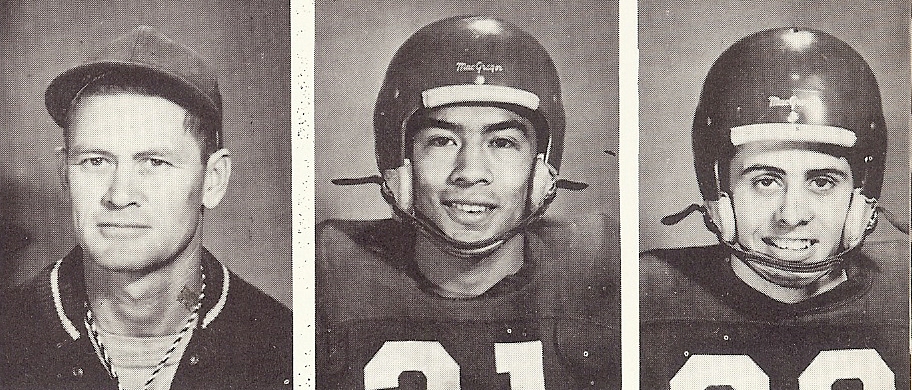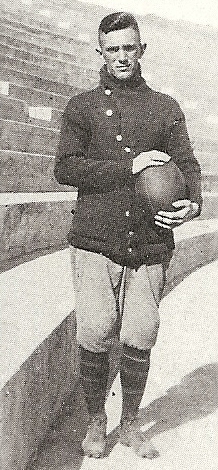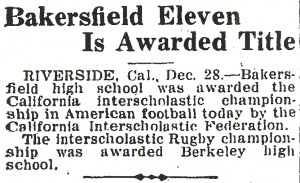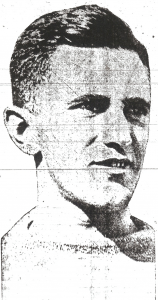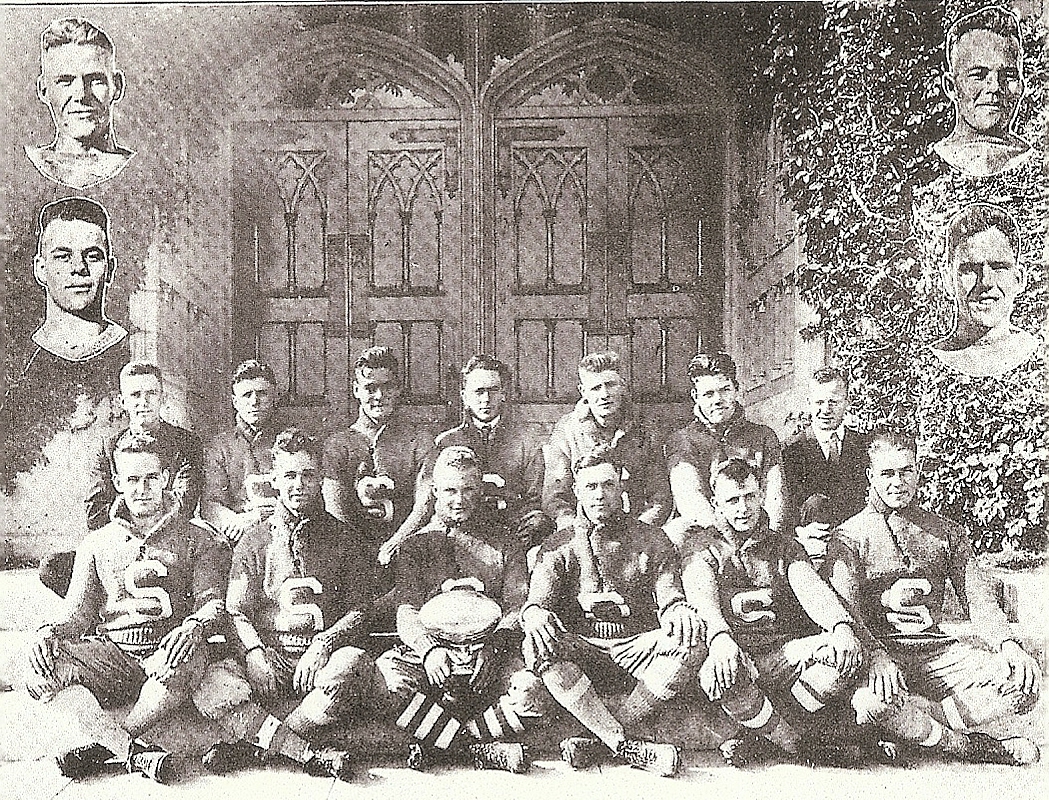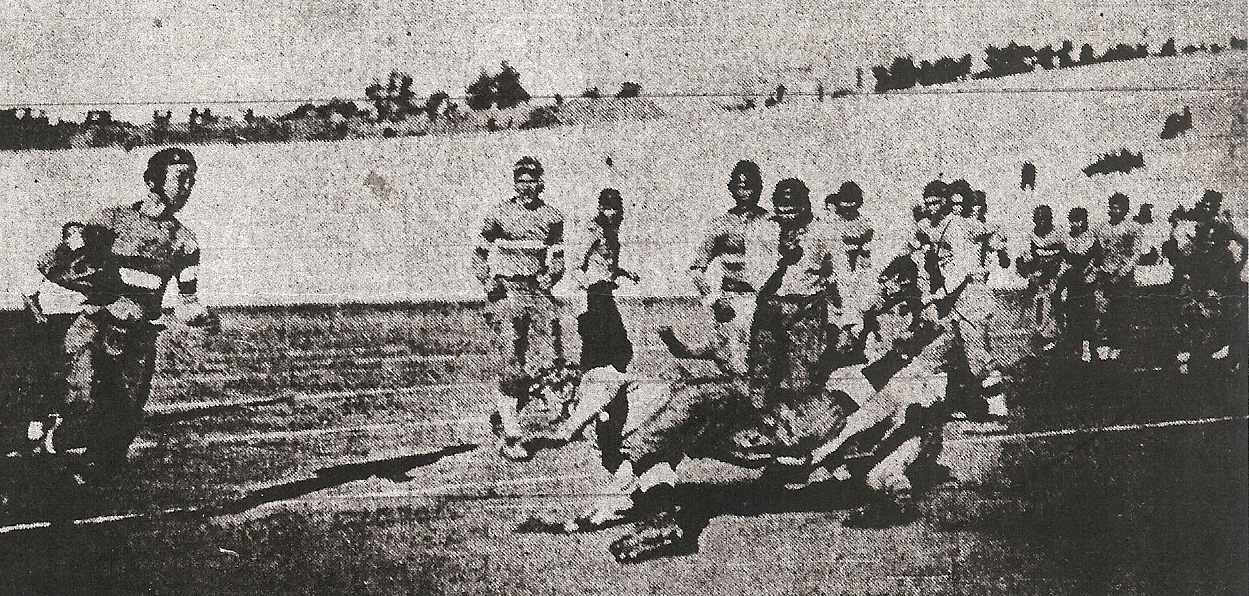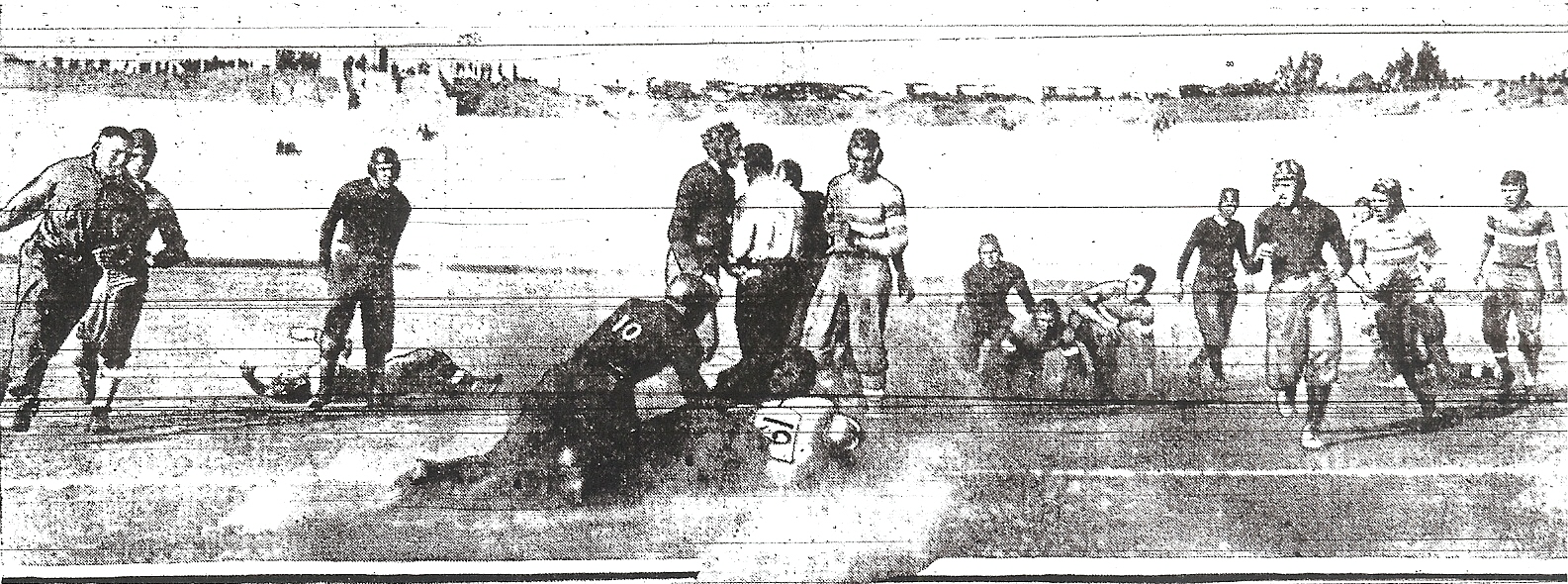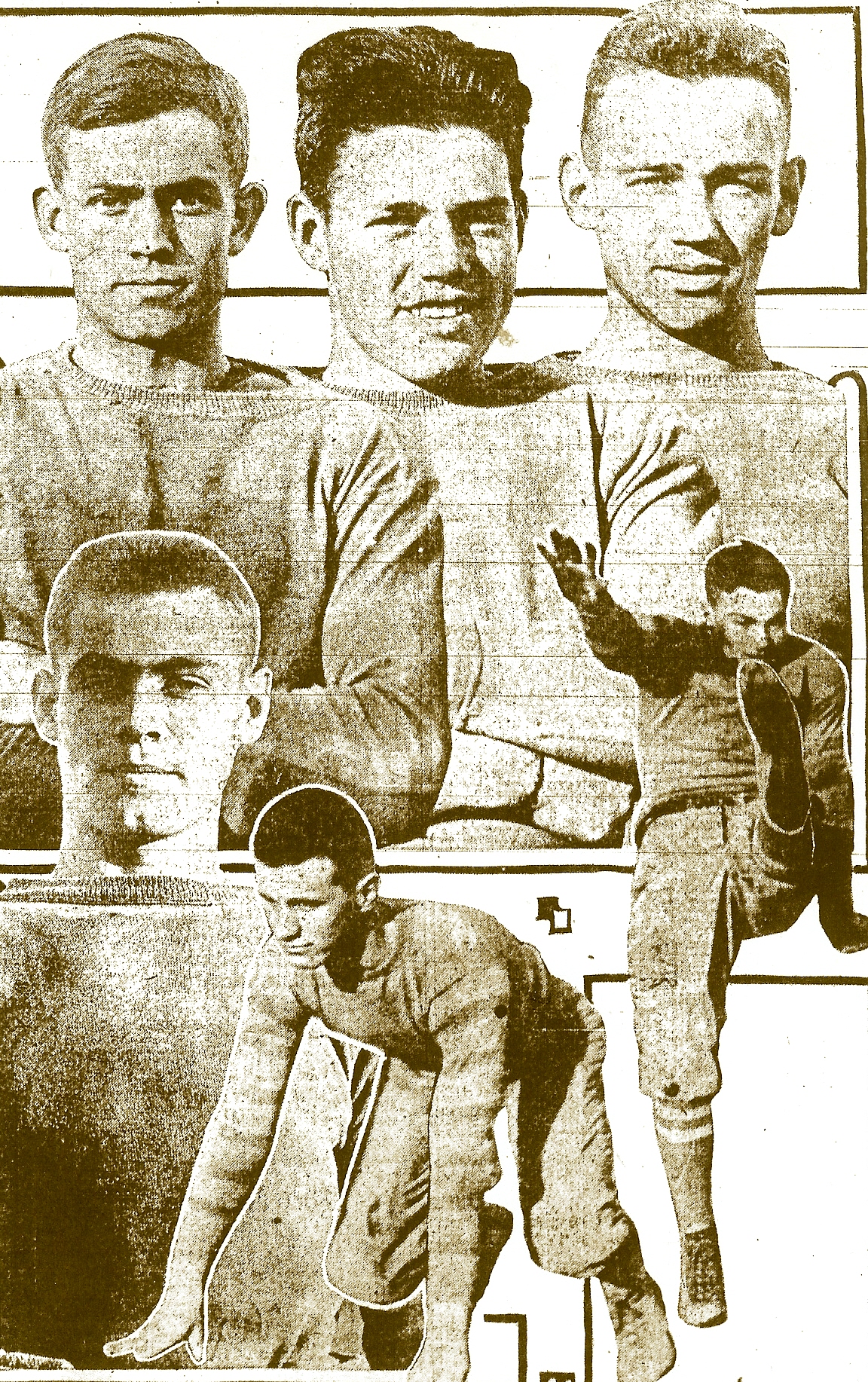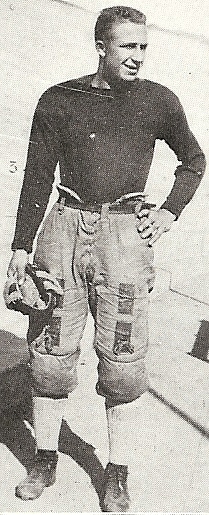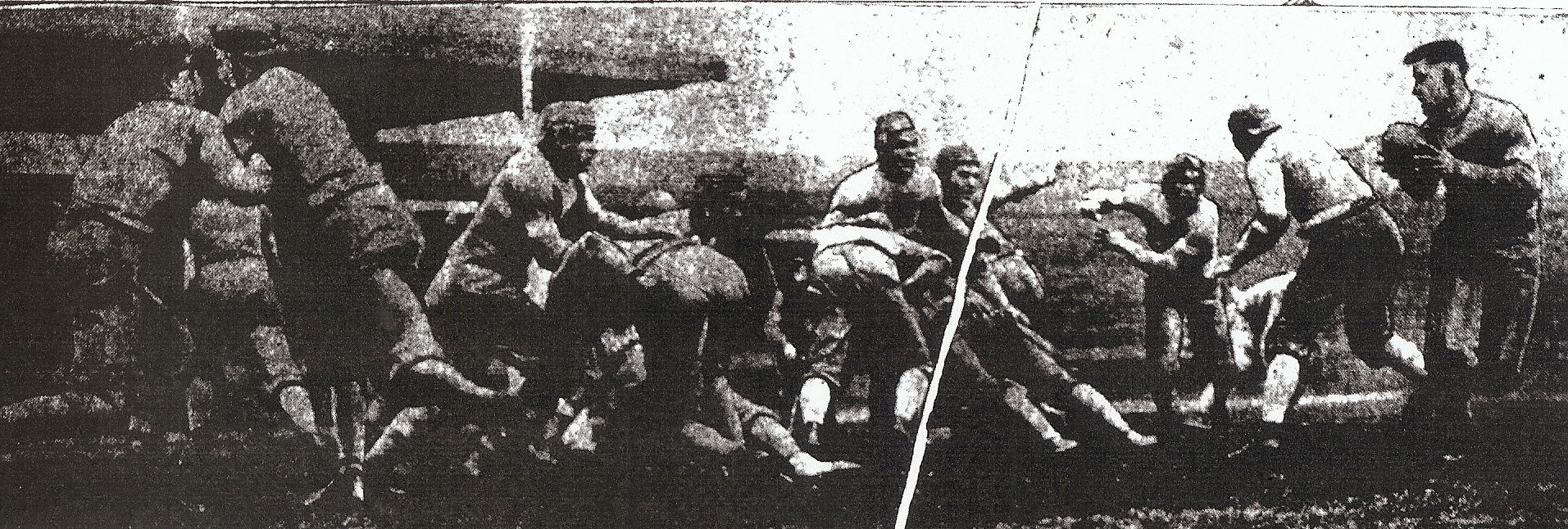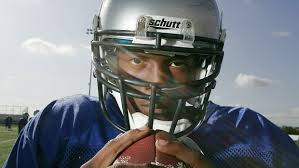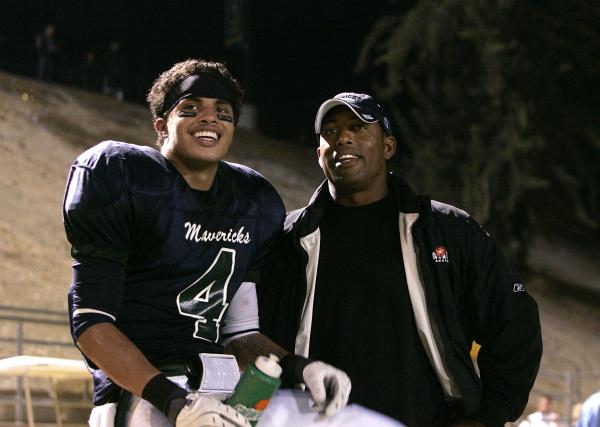1960: For Better or (Mostly) Worse
San Diego County was “free” of the giant Southern Section and on its own, twenty-eight schools strong.
The formation of the local CIF section pleased administrators and assorted education honchos who wielded the sharp end of the stick.
Coaches and most fans were ambivalent.
The great competition against Northern schools and the building excitement of playoffs at foreign sites against largely unknown opponents was gone, replaced by two divisions and two weeks of watered-down postseason play.
Champion of 28 schools was not like champion of more than 300.
3 STAY PUT
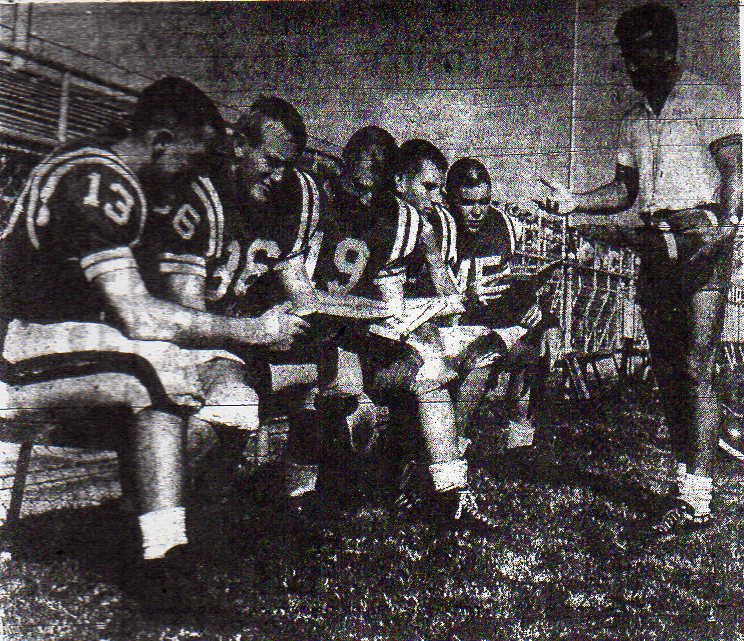
Three County affiliates did not join the new section. Mountain Empire and Rancho del Campo remained in the Southern Section and usually played more easily accessed Imperial Valley squads.
Fallbrook, 0-8 in 1957 and 0-9 in ’58 as a member of the Avocado League, was not considered strong enough to compete against schools from the North County circuit.
The Warriors had joined the DeAnza League in Riverside County in 1959 and stayed there through this football season. Their opponents were schools such as Hemet, Perris, San Jacinto, and Beaumont.
The alignment agreed with coach Al Waibel’s club, which was 3-1 in the league and 6-3 overall.
Fallbrook dropped a 32-0 decision to San Pedro Mary Star of the Sea in the first round of the Southern Section small schools playoffs.
Football at Julian still was seven years away, making 27 the actual count of football-playing schools in the San Diego Section.
San Diego fans were happy, as long as their teams were winning.
That meant that virtually every week was a celebration at Escondido High, where coach Bob (Chick) Embrey built a small school power into a major force in the new order.
The game of the year matched San Diego, at 6-2 the Eastern League champion and, by reputation, the favorite, against the 7-1-1 Cougars in the AA semifinal.
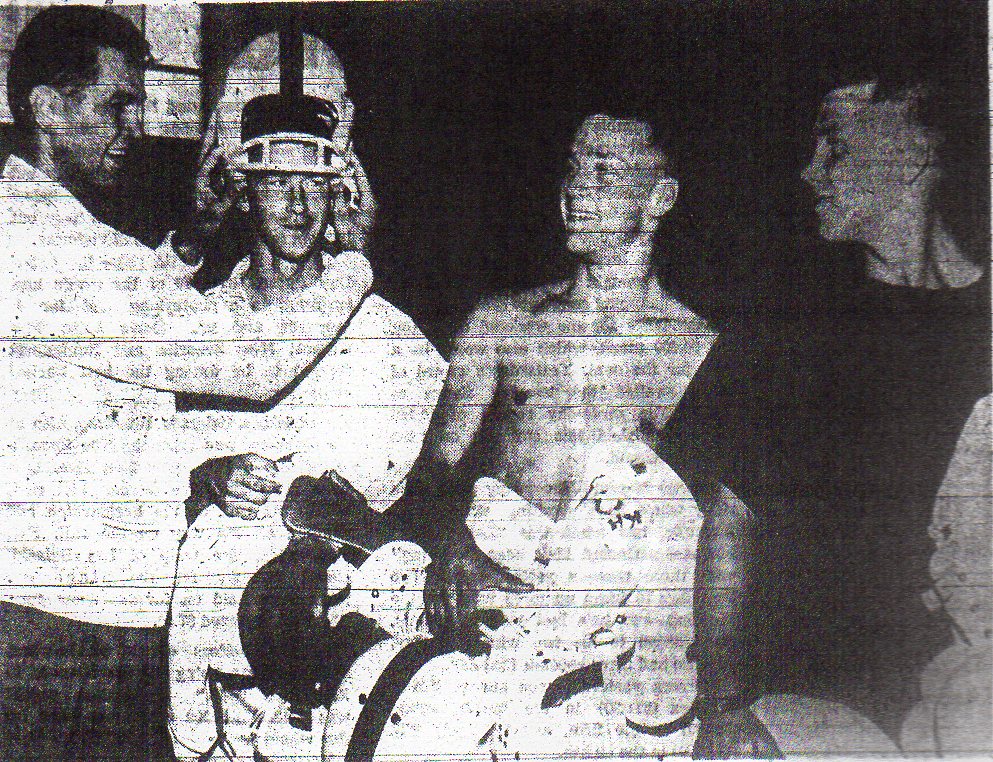
MAESTRO, MUSIC!
Escondido fired a shot across the Cavers’ bow before the kickoff.
The North County school’s pep band struck up “The March of the Olympians,” which was written for the 1960 Summer Olympics in Rome, as the Cougars marched onto the field from the South end of Balboa Stadium, helmets tucked under their arms against their sides.
They could have been matadors entering the ring.
The novel approach clearly one-upped the Cavemen, who for years cowed visiting teams with their traditional entrance down the steps from the top of Balboa Stadium’s North end zone.
COUGARS IN CONTROL
Escondido’s 19-13 victory was not as close as the final score. The Cougars outgained San Diego, 293-246, and led, 19-7, in the third quarter.
“We could have scored more, don’t you think?” enthused the jubilant Embrey.
Embrey could not have been blamed for gloating, although that was not his intention. He was Escondido’s star player in 1944, when the Cavers beat the Cougars, 20-0, in a Southern Section playoff.
Quarterback Doug Bennett completed 6 of 9 passes for 161 yards against San Diego and, as further evidence of a changing of the guard, had the fastest man on the field.
Wingback Dave Blunt was on the receiving end of a 66-yard pass play which gave the Cougars a two- touchdown lead.
Blunt also became the first San Diego Section sprint champion the following spring, running :09.7 in the 100-yard dash and 21 seconds in the 220.

POINTERS WIN TIE
Point Loma tied Helix, 6-6, in the other semifinal and advanced because of their 13-8 advantage in first downs.
Mount Miguel, winner of five in a row since it had gone to a power ground game, in coach Harry Johnston’s words, defeated La Jolla, 7-6, and Vista beat University, 32-20, to reach the Class A, small-schools championship.
The championship games went to form.
Escondido defeated Point Loma, 20-13, before an estimated overflow crowd of 9,000 at the Cougars’ field.
Doug Bennett passed 42 yards to Dave Blunt and 4 yards to Pete Schouten and Blunt returned an intercepted pass 40 yards to give the Cougars three touchdowns and a 20-6 lead.
WHO’S A BULLY?
No one, but that was what several residents of Spring Valley thought I was calling Mount Miguel after the Matadors defeated Vista, 40-13, for the Class A title.
In my game story I made a comparison of the good big man always defeating the good little man. And I wrote, using a very trite and poor play on words, “Mount Miguel’s Matadors, a big, bullish Metropolitan League entry, overpowered Vista, a small tough Avocado Leaguer….”
I received telephone calls and letters from outraged Mount Miguel followers, saying I had called their team a bunch of bullies and most suggesting I should not show my face in Spring Valley, where the school was located.
Looking back, what was Mount Miguel doing in the small schools bracket?

With more than 2,500 students, Mount Miguel was the largest school in the County. Vista had an enrollment of about 950.
Mount Miguel and La Jolla were the two at-large teams invited to the small school playoffs after finishing second in their large school leagues and with the best second-place records.
“They were just too big and too strong,” said Vista coach Pat Mongoven. “Maybe they’ll do something next year about those pairings.”
MATADORS’ 1-2 PUNCH
“Torge and Freeman, then comes the screamin’!” That was how Tribune writer Roger Conlee described the Mount Miguel attack.
Russ Torge gained 146 yards in 11 carries and scored two touchdowns, including one from 71 yards.
Duane Freeman had 74 yards in 14 carries, scored once, and blocked a punt which Matador John Rea returned 19 yards for a touchdown.
DOUG VS. EZELL
Doug Bennett, who played behind Steve Thurlow at Escondido in 1959, completed 98 of 155 passing attempts for 1,577 yards and 17 touchdowns in 11 games.
San Diego’s Ezell Singleton had a sizeable advantage with 28 touchdown passes in 1958, but wasn’t that far ahead with 111 completions in 179 attempts for 1,711 yards.
Bennett averaged 10.2 yards per passing attempt and Singleton 9.6. Singleton averaged 15.4 yards per completion and Bennett 16.1.
HONORS
Bennett made the all-Southern California first team. End Doug Agatep of Escondido and Helix lineman Dennis Michalenko were on the second team and Crawford running back Jim (Corky) McCorquodale was on the third team.
There were no San Diego Section players on any of the three, all-Southern Caliifornia lower division teams.
EXPANDING
The alignment would be for only one season, but the 10-team Metropolitan League was halved into Northern and Southern Divisions, geography be damned.
El Cajon, El Capitan, Escondido, Granite Hills and Hilltop formed the Northern Division. A Southern Division embraced Helix, Grossmont, Chula Vista, Mount Miguel, and Sweetwater.
The distance between division rivals Escondido and Hilltop was 36 miles. The distance between Hilltop and city neighbor and non-division opponent Chula Vista was 3 miles.
The six schools in the Grossmont League would have their own circuit in 1961, plus the new Monte Vista High in Spring Valley.
PERSISTENCE PAYS
St. Augustine’s defense braced and stopped Point Loma on the Saints’ 19, 22, 37, 24, and one-yard lines, but the Pointers finally put the 12-6 game away with a touchdown by Curtis Mosley that ended a five-play, 27-yard drive with 1:36 remaining.
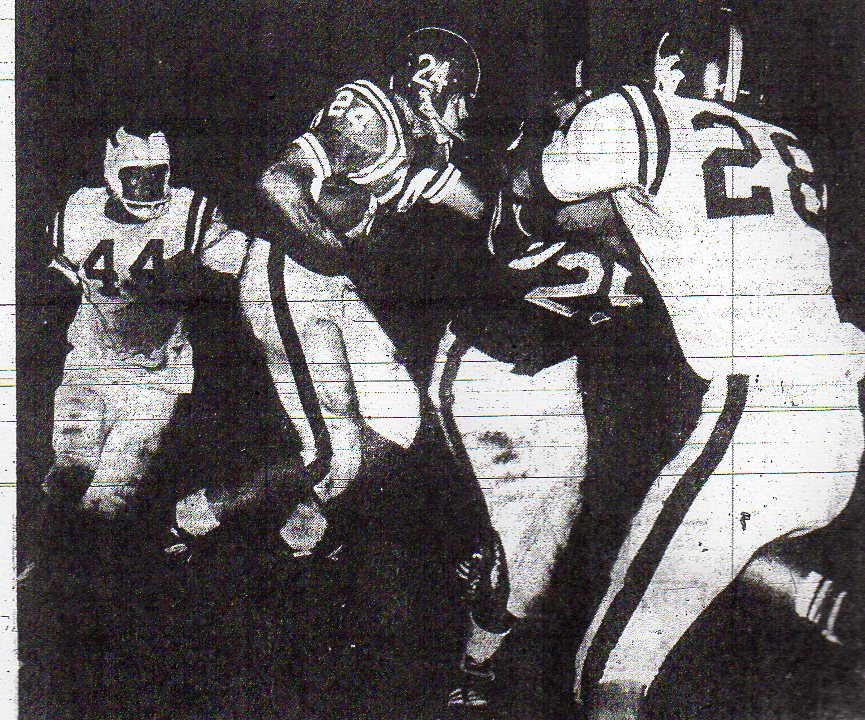
It was St. Augustine’s first loss in 14 games.
ALL-STAR GAMES AND CARNIVALS
They were abundant and they were popular.
San Diego scored its first victory in five tries over the Los Angeles City aggregation in the 12th annual Breitbard College Prep All-Star game.
The 27-12 victory, fueled by the performance of Escondido’s Steve Thurlow and San Diego High’s Richard (Prime) McClendon, came before an Aztec Bowl record turnout of 13,700.
Thurlow passed for two touchdowns and ran for another. McClendon rushed for 151 yards and ran 66 yards for a score. The local squad trailed 12-0 at halftime but wore down the Los Angeles stars with a rushing attack that netted 333 yards.
The San Diego-L.A. format replaced the Southern California-L.A. game in 1956. The series started in 1949.
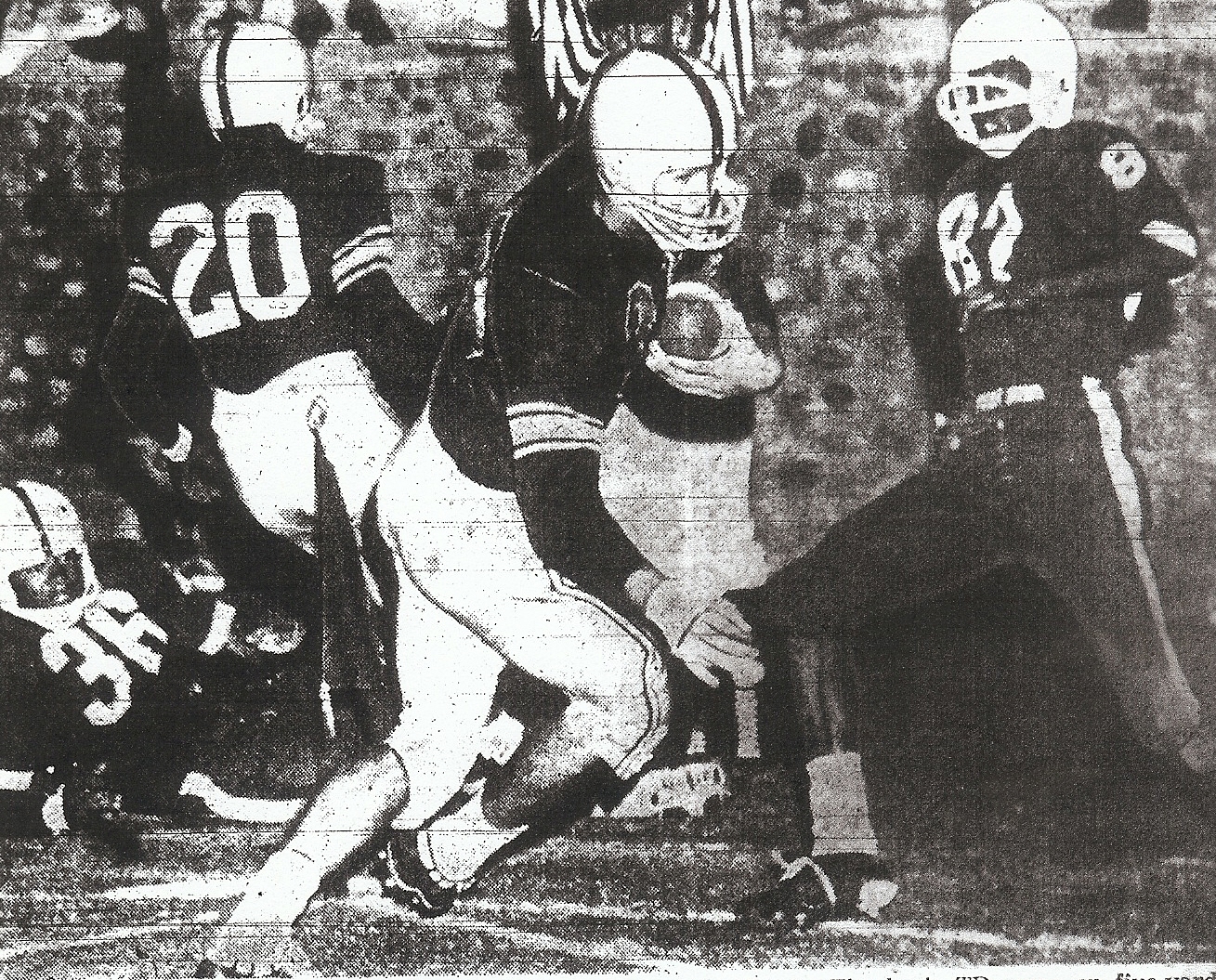
CAVERS TAKE TO AIR
Passes by the Cavers’ Lou White resulted in carnival scoring plays of 88 yards to Thomas Phillips, 22 yards to David Ortman, and 68 yards to Eddie Frost.
The Metropolitan League carnival featured only Grossmont District squads and drew a capacity crowd of 12,000 to Aztec Bowl.
Six teams played three, 20-minute quarters.
Mount Miguel, Granite Hills, and Helix of the West won, 25-6.
Mount Miguel beat El Cajon Valley, 19-0, in the second quarter after Granite Hills, teeing up for the first time, battled to a 6-6 standoff with El Capitan. Helix and Grossmont played to a scoreless deadlock in the final quarter.
START-UP INCONVENIENCES
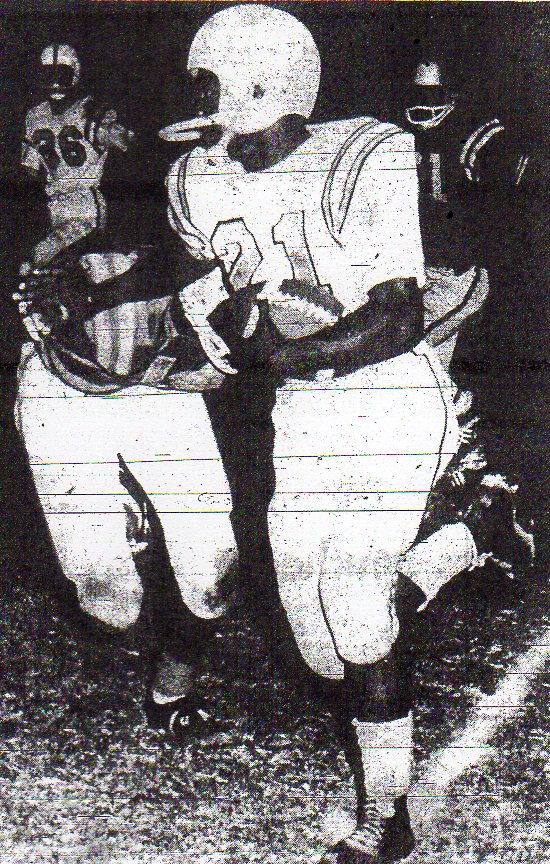
Granite Hills opened its doors for the first time, minus some of the usual necessities.
The Eagles’ one “luxury” was cold showers, but was an improvement over the initial conditions.
Coach Glenn Otterson’s team originally was forced to use hoses to wash off practice sweat and dirt. The players then had to take their uniforms home for a more complete cleaning and bring their own towels to school.
Lockers became available midway into the season. Until then, the Eagles’ used a “dressing room.” As Roger Conlee wrote in the Evening Tribune, the players piled their clothes in a bare, four-walled enclosure that was locked during practice.
“SHOWERS,” CON’T.
Four seconds remained at Mount Miguel, where Granite Hills and Sweetwater were completing a nonleague game which Sweetwater won, 20-6.
As Granite Hills quarterback Tom Roth was about the accept the snap from center, Roth and his teammates heard a hissing noise behind them.
Sprinklers went on all over the field. Scrambling officials were unable to find the automatic timing device which controlled the system, so the teams went ahead with the last play in a shower.
“Both benches (then) emptied fast,” said Otterson. “They scattered like it was a fire drill.”
UNIVERSITY OF…PENALTIES?
Coach Robert (Bull) Trometter’s University of San Diego High Dons dropped a 30-6 decision to Fallbrook.
Nothing out of the ordinary about the score but the Dons had five touchdowns erased by penalties, including 4 in the game’s first six minutes.
Uni, playing a full varsity schedule for the first time, was eager to please Trometter, the highly successful former Marine Corps Recruit Depot mentor.
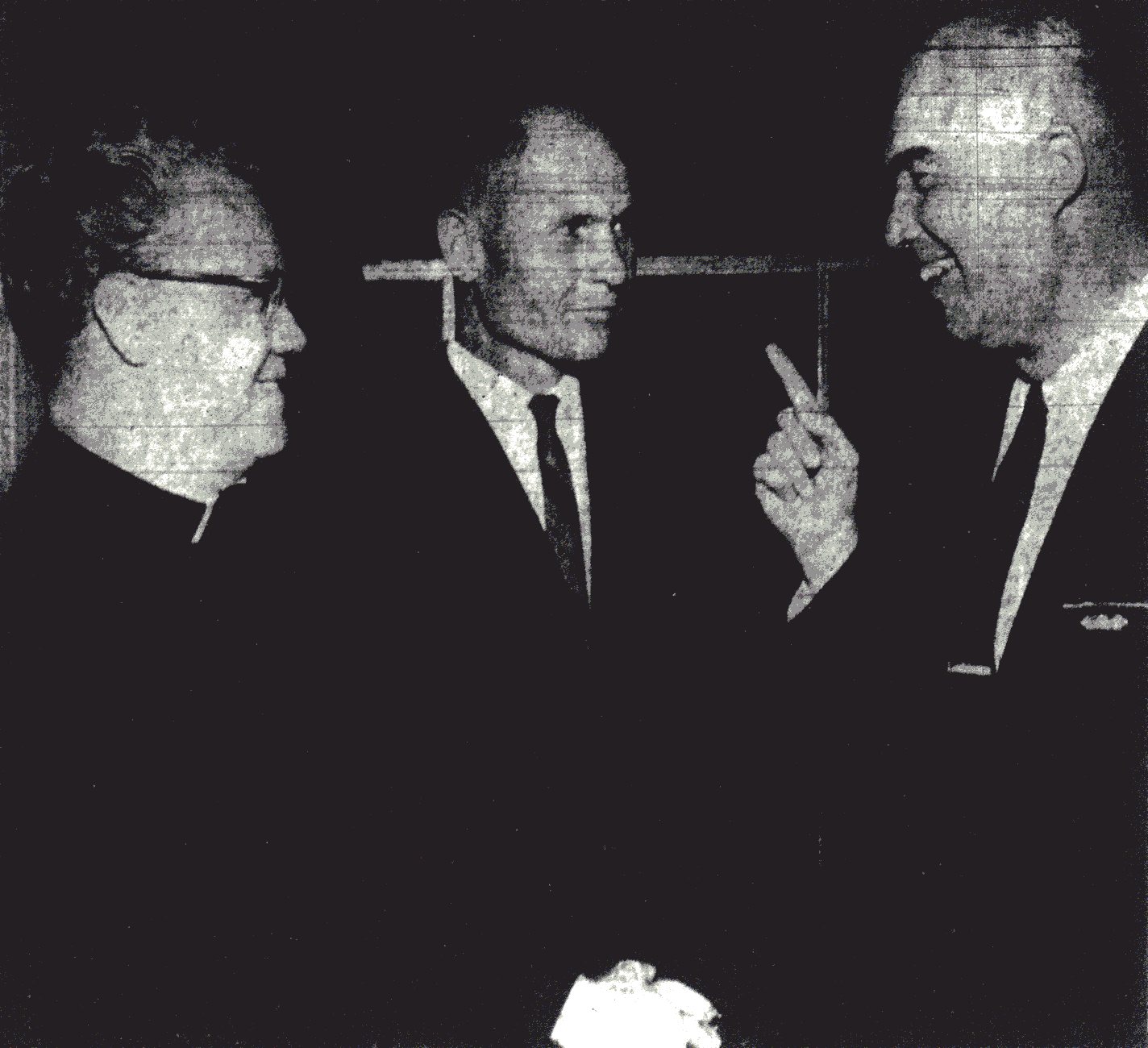
“I wouldn’t say it was the officials’ fault,” tactfully noted Trometter, a decorated, retired Marine Corps officer. The coach said his players essentially were “over-eager and inexperienced,” leading to a flood of off-sides, holding, and other violations.
The Dons dropped their first three games, won their final three and earned a first-round Class A playoff berth.
NIGHT AND DAY
Rowdism, which provoked a move of the city football carnival from evening to afternoon in 1959, was a continuing problem.
Police Chief Elmer Jansen addressed several concerns for his department, including staffing and expense, and suggested switching games to daylight.
Very Rev. John Aherne, principal at St. Augustine, was spokesman for the pro-night-games group and said crowds would be down at day games and that there was no guarantee that rowdyism would not continue.
Night games continued in the city during the playoffs after much rhetoric.
PLAY IT AGAIN, SAM
An Oceanside-Carlsbad school district trustee suggested that Oceanside and Carlsbad replay their 0-0 tie.
John Prenzel proposed an investigation to determine if such a game “would be in accord with California Interscholastic Federation rulings.”
Prenzel thought a rematch under auspices of the Oceanside Lions Club could be played on Thanksgiving Day, with proceeds going to the rival schools’ student body funds.
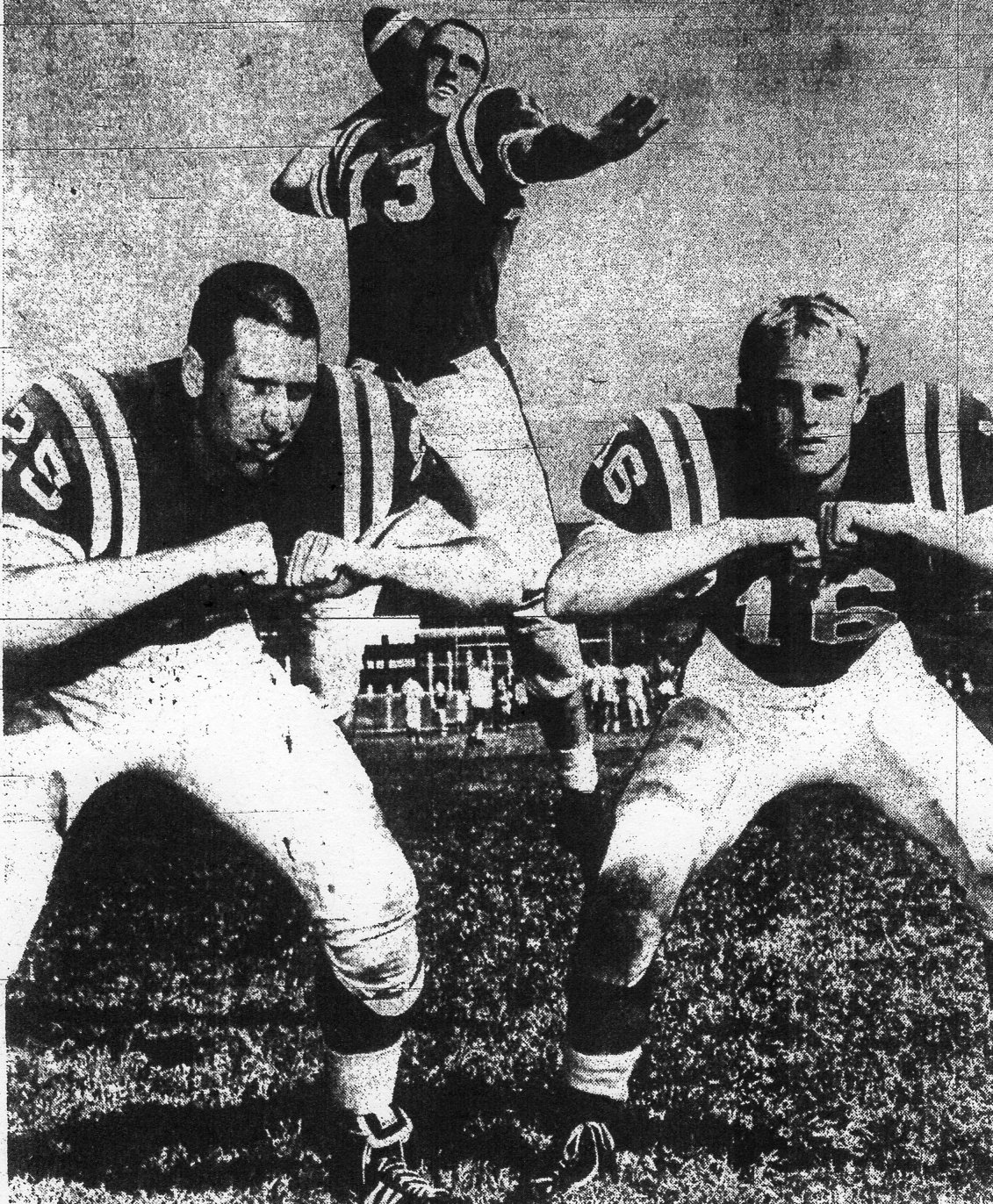
The game wouldn’t affect league standings, said Prenzel.
It was an idea whose time had not come. No action and no game took place.
PLACEMENTS POPULAR
Field goals were making a comeback, or rather they were being discovered.
After years in which no placements were made or attempted, at least four attempts were successful this year. Soccer-style kicking still was a few years away.
Coronado lost to La Jolla, 21-10, but the Islanders’ Bob West kicked a 21-yard field goal. San Dieguito’s Randy Simpson made a 34-yard placement in a 3-0 victory over El Centro Central.
Not to be outdone, Helix’ Bill Burnett was good from 25 yards in a 36-0 win over Grossmont and Fallbrook’s Jim Martin converted from 22 yards in a 24-14 win over Elsinore Military Academy.
SCHOLASTIC STUMBLES
City schools quarterly grades during the season meant academic casualties.
Clairemont, the consensus preseason favorite, would not win a league game and lost fullback Ron Power, one of the area’s better offensive players, to grade deficiencies.
Mission Bay was down to 24 players after first teamers Jeff Moran, Martin Brown, and Gene Scales were beaten by the books.
Lincoln lost halfback Vernus Ragsdale. San Diego halfback George Mahaffey and tackle Billy Tyus also received the academic rubber key.
In another, unexpected move, Robert Nelson, a promising halfback at Point Loma, suddenly transferred to Lincoln.

HELP FOR JEFF
A practice injury left Crawford’s Jeff Greenleaf paralyzed from the waist down. To help incur Greenleaf’s hospital bills donations were sought and the Colts met Sweetwater in a Thanksgiving Day, postseason contest at Hoover.
More than 6,000 persons were on hand as Crawford, giving an indication of what to expect in 1961, ran past the Red Devils, 33-9.
The Red Devils’ Ron Miller was held scoreless but still led the County with 13 touchdowns and 78 points. Sweetwater coach Tom Parker donated the game films to Greenleaf’s family.
IT’S SIMPLE, JUST WIN
Army-Navy coach John Maffucci described life at the Carlsbad military academy:
“We’re a boarding school and there is an advantage to having the players on campus most of the time. When we lose, they stay in; when we win, they can go out.”
SIGN OF THE TIME
The frontage road serving hotels in Mission Valley was renamed Hotel Circle by the San Diego City Council.
TRUE GRID
Crawford coach Walt Harvey on running back Jim (Corky) McCorquodale: “He can run, pass, punt, play defense, and block”…Corky was among the County leaders in scoring with 55 points…“We played better in the carnival (21-6 loss in one quarter to San Diego) than we did tonight (7-0 victory over Crawford),” said Kearny coach Birt Slater….Mission Bay outrushed Pomona Catholic, 258-104, and lost, 27-7…obscure name of the year: Vista halfback Joe Picchiottino (pitch-ee-oh-teen-oh)…Point Loma’s Robert Nelson scored on a 48-yard run on his first attempt as a varsity player…Glenn Forsythe returned to Ramona as head coach after one year as a journalism professor at Reedley Junior College near Fresno…defenders of San Diego’s move away from the Southern Section reminded that the AAAA finale between Compton Centennial and Santa Barbara drew only 8,619 persons to the Los Angeles Coliseum… …St. Augustine’s 14-6 victory over San Diego was the Saints’ first ever against the Cavemen…they were 0-8-1 against Cavers teams of different levels dating to 1926…the Saints’ Mickey Frank, 6-foot-3 and 292 pounds, was credited for an outstanding defensive performance…Helix’ defense called itself the “Untouchables”…so did San Diego’s offensive backfield…Vista coach Pat Mongoven had another job, president of the North County community’s American Little League….

